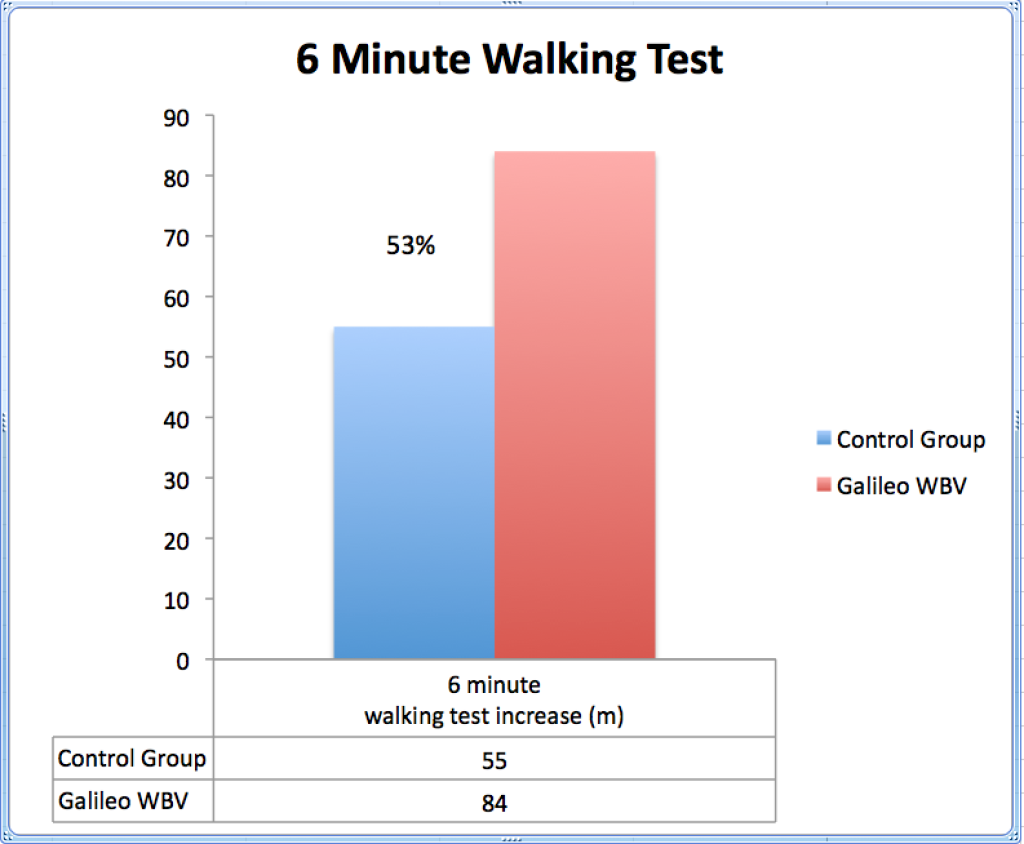Effects of a complementary whole body vibration training in patients after lung transplantation during pulmonary rehabilitation – a randomized controlled trial
Rainer Gloeckl, Inga Heinzelmann, Thomas Damisch, Stella Seeberg, Klaus KennSchoen Klinik Berchtesgadener Land, Department of Respiratory Medicine, Schoenau am Koenigssee, Germany
Rationale
In a former study we could show that performing whole body vibration training (WBVT) in addition to endurance and strength training was superior in increasing exercise capacity in patients with severe chronic obstructive pulmonary disease (COPD). Thus, we now used this training regime in patients after lung transplantation (LTx) to investigate if there is also an additional benefit of WBVT in this special patient cohort.
Methods
Consecutively 83 LTx-patients (mean 10.7±12.8 weeks after LTx due to interstitial lung disease: n=51 and COPD: n=32, single-/double-LTx: n=28/55, age: 56±7ys, FEV1: 71±20% pred., 6-minute-walking-distance (6MWD) 368±113m) were enrolled in this randomized controlled trial. All patients underwent a 4-week inpatient pulmonary rehabilitation (PR) program including standardized endurance and strength training on 5 days per week. Additionally patients performed a dynamic and self-paced squat training (3 times per week for 4×2 minutes each). Patients were randomly assigned to perform squat training either on a WBVT platform (Galileo®, Novotec Medical, Germany) at a high frequency of 24 to 26 Hertz with a peak-to-peak displacement of 4 to 5 mm (WBVT-group) or on the floor (control group). Primary outcome parameter was the 6MWD. Further outcome parameters were peak quadriceps force (QF), peak work rate (PWR) and the 5-repetition chair-rise-test (5-CRT).
Results
Seventy patients completed the study and were included in the final analysis (WBVT: n=34, control: n=36). The 6MWD improved significantly more in the WBVT-group compared to the control group (84±57m versus 55±47m, delta 29m, p=0.015 (95%CI 3.1 – 53.7m). Secondary outcome parameters also improved significantly but without any significant between-group difference (PWR: WBVT 17±11watt versus control 13±10watt, QF: WBVT 10.3±9.0% versus control 8.8±5.7%, 5-CRT: WBVT -5.1±4.7 sec versus control -3.8±6.1 sec). No training related adverse events did occur.
Conclusions
A complementary WBVT on top of conventional endurance and strength training seems to be superior in improving 6MWD in patients after LTx compared to endurance and strength training alone.


